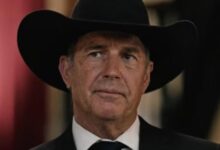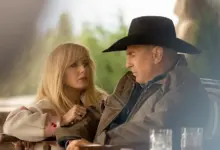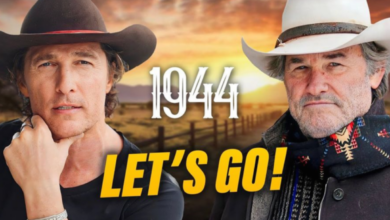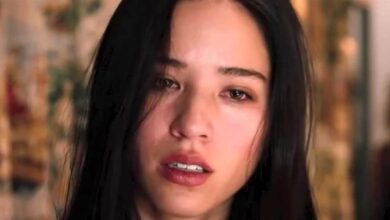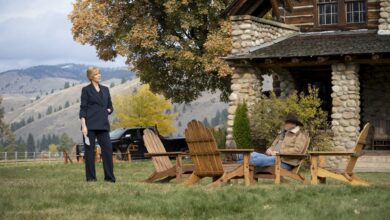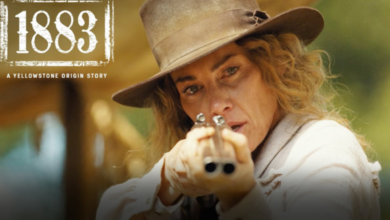
‘Yellowstone’ spin off ‘1944’ to be filmed in Bitterroot Valley

While much of America was tuned in to the Grammy Awards on Sunday night, Paramount Network officials gathered at a community thank-you event at City Hall in Hamilton, touting the economic benefits the television series “Yellowstone” has brought to Montana and announcing a new prequel to the popular Taylor Sheridan franchise titled “1944,” much of which is expected to be filmed in the Bitterroot Valley.
Tom Prince, executive vice president of production at 101 Studios, who partners with Paramount for production of “Yellowstone,” described the project, currently in development, as a follow-up to “1923,” filmed in Butte, starring Harrison Ford and Helen Mirren as Jacob and Cara Dutton.
“Of course, we’ve got 1923, we’ve got the sequel, we’re not letting the cat out of the bag, it’s going to be called ‘1944,’” Prince said. “My guess is that it’ll be shooting largely in the Bitterroot Valley because it has to take place at what is Chief Joseph Ranch.”
Chief Joseph Ranch in Darby is central to the “Yellowstone” franchise, doubling as the iconic Dutton family ranch on the hit TV series starring Kevin Costner.
“It’s an enormous hit, not just in the United States.” Prince said. “I was just in Europe two weeks ago. They talked about it in London, I’m like ‘how the hell do you know about Yellowstone in London?’ It’s a big, big show. And it’s the highest quality of television being made right now.”
A recent study conducted by the University of Montana’s Bureau of Business and Economic Research and UM’s Institute for Tourism and Recreation Research found that the series brought an estimated 2.1 million visitors and $730 million in spending to Montana in 2021. The study also found that the TV show, filmed largely in Darby, Hamilton and Missoula, has been a significant marketing factor for Montana, with more than 12 million viewers catching a glimpse of the state’s stunning views during the season five premier in November.
“We spent $75 million last year just in the Bitterroot Valley on housing in hotels, and wages and bars,” Prince said. “We also do a little television series called ‘1923’ that was shooting in Butte. We’re going to draw up about the same amount of money up there.”
Prince also discussed how the state’s film tax credit passed in 2019 contributed to the decision to move more of the franchise’s production to the Treasure State.

“So this is our third year coming up to Montana,” Prince said. “We came out two years ago when we moved out of Utah. We used to shoot at 75-80% in Utah for the first three seasons, and we’d come up to Montana to shoot the Chief Joseph Ranch. When COVID hit, Utah pulled their rebates and Taylor Sheridan said, let’s move the whole thing up to Montana. And I don’t think it’s a surprise the viewership has spiked.”
Wylie Galt, a Republican from Martinsdale and former Montana speaker of the House, carried the 2019 Montana Economic Development Industry Advancement (MEDIA) Act in the Montana Legislature along with Democrat Sue Malek of Missoula, creating the state’s film tax credit.
“The numbers, the studies that have come out, have shown the economic development that’s coming from it,” Galt said Sunday night. “I think eventually, you’re going to see this in more and more rural parts of Montana, which was kind of the main genesis of why I brought it, is keeping kids on ranches and, you know, other forms of income for the rural communities to keep the state rural… It’s great money because they come in, they spend and they leave. So it’s great for everyone involved.”
Montana filmmaker Lynn-Wood Fields said the benefit of productions like “Yellowstone” filming in Montana “is not a small deal.”
“It’s a big deal that Montana has the No. 1 television show in the nation filming in our backyard,” Fields said. “We also have over 100-plus productions that film besides that, all across the Hi-Line to Browning, and across the state, so we’re seeing benefit in film all over.”
Besides the money spent on production, many of those films are hiring Montanans to work on set. Fields started the Missoula-based Media Training Center two years ago, partnering with Accelerate Montana to create rapid training programs for people interested in working in the film industry and said the “success stories have been numerous.”
“We did a course in Butte for ‘1923,’ and ‘1923’ came to the course and hired out of the classroom, and everybody there was on the set,” she said.
The Media Training Center recently partnered with Bitterroot College to bring a rapid training course to the Bitterroot Valley and will also be offering courses in five other locations, including Belgrade and Missoula.
“Every year these productions are hiring more and more Montanans,” Fields said. “And that’s essential.”
